Introduction
Recent trends in Florida's gas prices demonstrate the volatile nature of energy markets, underscored by a complex interplay of factors. The costs associated with clean energy have seen a slight uptick after a decade of consistent decline, attributed to cyclical market conditions. Strategic interventions such as streamlining the interconnection process and enhancing transmission planning could potentially reverse the cost increases.
Understanding these factors provides a clearer picture of the gas price landscape in Florida, revealing that the reasons behind the increases are multifaceted and extend beyond simple supply and demand equations. In this article, we will explore the factors influencing gas price increases, regional differences in gas prices across Florida, and the impact of global events on gas prices. We will also discuss the future outlook for gas prices in Florida and provide a historical context of gas price fluctuations in the state.
By delving into these topics, we aim to provide insights that can guide consumers and policymakers in making informed decisions regarding energy consumption and sustainability.
Recent Changes in Florida Gas Prices
Recent trends in Florida's gas prices demonstrate the fluctuating nature of fuel markets, underscored by a complex interplay of factors. Reports suggest that while renewable power sources like wind and geothermal have been playing a larger role in the power combination, the costs associated with clean sources of power have experienced a slight increase after a decade of steady reduction. This shift in the cost-efficiency of renewable sources, as noted by New Energy Innovation researchers, is attributed to cyclical and temporary market conditions.
Comprehensive analysis indicates that the solution to reduce increasing expenses lies in strategic interventions such as optimizing the interconnection process, strengthening domestic supply chains, improving transmission planning, and reiterating commitments to a diverse clean power portfolio. Such measures could potentially reverse the cost increases and extend economic benefits to consumers.
This background of shifting costs related to power is especially important in comprehending gas fluctuations in Florida, as the power generation industry of the state develops. The integration of renewable resources statistics, with a recent adjustment in fuel consumption allocation for combined heat and power plants, has resulted in reported increases in power generation efficiency. Nevertheless, these advancements juxtapose with the challenges of transitioning to a renewable-based system, which some experts describe as complex and laden with obfuscation.
Dr. Euan Mearns emphasizes the notable technological advancements and changes in government strategies over the past 80 years that have impacted the generation of power and the historical backdrop that frames the current fluctuations in gas costs. As we navigate through these dynamic market conditions, the insights from such comprehensive analysis can guide consumers and policymakers alike in making informed decisions regarding energy consumption and sustainability.
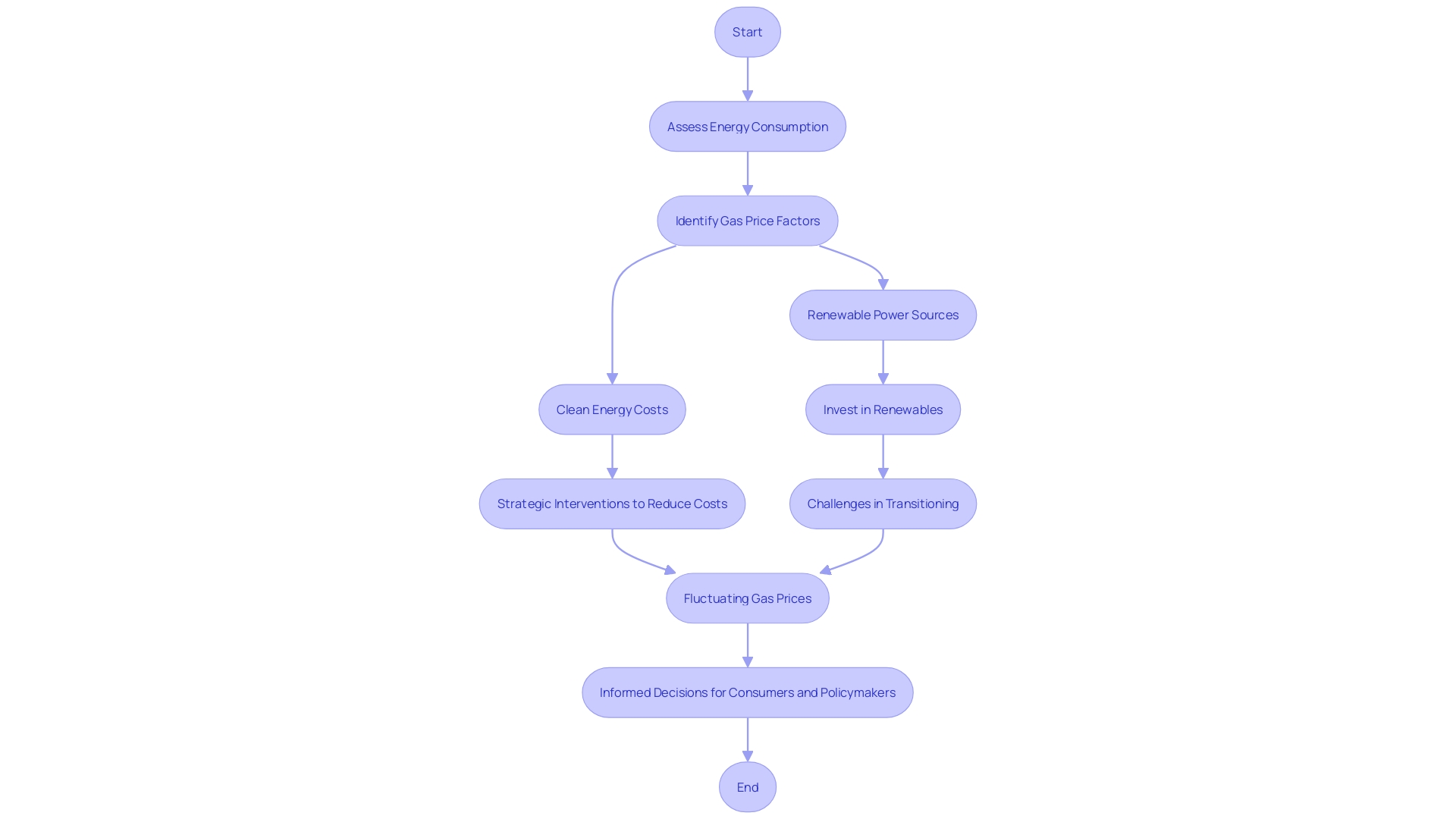
Factors Influencing Gas Price Increases
The cost of gasoline in the state of Florida is influenced by a complex interplay of various factors, with each contributing to the overall expense at the pump. A significant factor is the global oil market, where the fluctuating prices of crude oil set the baseline for downstream fuel costs. Notably, supply and demand dynamics also play a crucial role. The rapid population growth in the state, with an 18% increase to an estimated 22.2 million residents between 2010 and 2022, has led to a surge in fuel demand. This growth outpaces many other East Coast states and places additional strain on fuel supplies.
Transportation logistics further complicate the pricing structure. The majority of fuel in the state is transported by water vessels from refiners on the U.S. Gulf Coast, because of the state's lack of direct access to major pipelines serving other East Coast states. Some areas, however, do receive shipments by truck from pipeline spurs ending in southern Georgia. The fuel needs of the state are met through imports, predominantly from Europe, adding to the transportation costs.
Amid these factors, Florida also grapples with an intense climate. The state experienced unprecedented heat in recent years, with cities like Miami reaching heat index values of at least 100 degrees Fahrenheit for a record-breaking 46 days. Such extreme temperatures can increase energy consumption, as air conditioning and cooling systems operate at higher capacities to mitigate the heat, further influencing demand for electricity and fuel.
Additionally, taxes and regulatory frameworks contribute to the overall cost that consumers incur. Policymakers and regulatory bodies have alternatives to ease some of the burden on fuel costs. Insights from the Energy Innovation research suggest that strategies like reforming the interconnection process, investing in domestic supply chains, improving transmission planning, and diversifying clean energy sources could help stabilize and potentially lower energy costs.
In the end, comprehending these interrelated factors offers a more transparent view of the gas cost scenery, unveiling that the causes for the rises are complex and go beyond mere supply and demand equations.
Regional Differences in Gas Prices Across Florida
Gasoline costs in Florida exhibit notable regional differences, due to a range of factors. The distance from supply refineries, the efficiency of the supply chain, and the competitive landscape in local markets all play crucial roles in these cost variations. For example, regions nearer to refineries may gain from reduced transportation expenses, whereas those with less competition might encounter elevated costs. Moreover, the infrastructure quality, such as the availability of pipelines or the condition of roads, can also impact the final cost of gas in different regions. Comprehending these elements is crucial for a thorough examination of the gas cost fluctuations within the state.
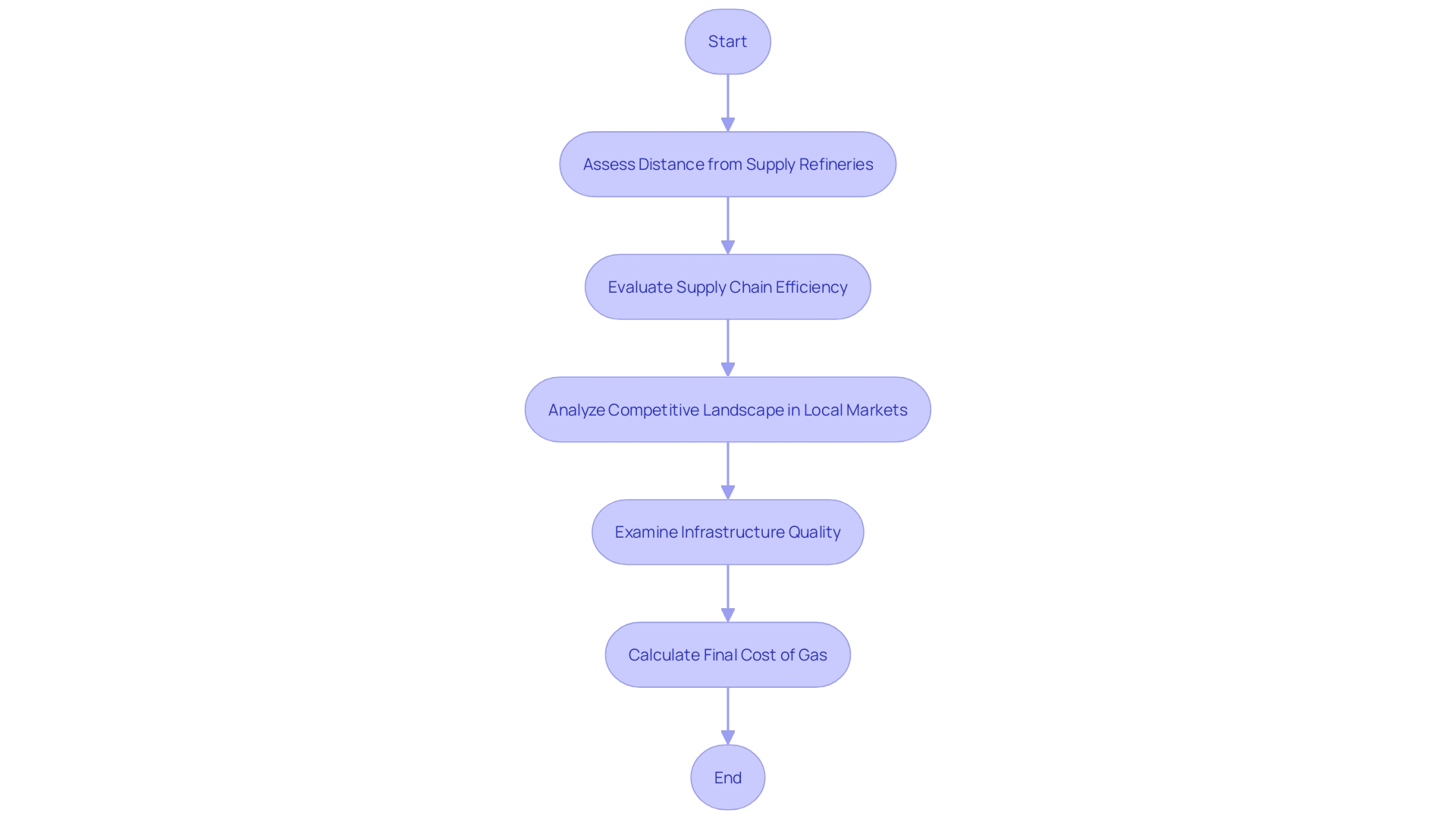
Comparison with National Average Gas Prices
A perceptive examination of Florida's gas costs in relation to the national average unveils intricacies in the state’s fuel economics. This analysis serves to identify whether Floridians are paying more or less for their gas and sheds light on various elements that could be influencing these cost points. Factors such as state-specific taxes, local fees, and distribution costs all contribute to determining the final amount consumers see at the pump. For example, different states impose varying taxes on fuel—such as sales taxes, excise taxes per gallon, and taxes targeting wholesalers or retailers. These fiscal policies, alongside additional fees like those for underground storage tank maintenance, directly impact the overall cost of gas. The extensive variety of tax rates across the United States greatly adds to the contrasting gas costs observed from one state to another.
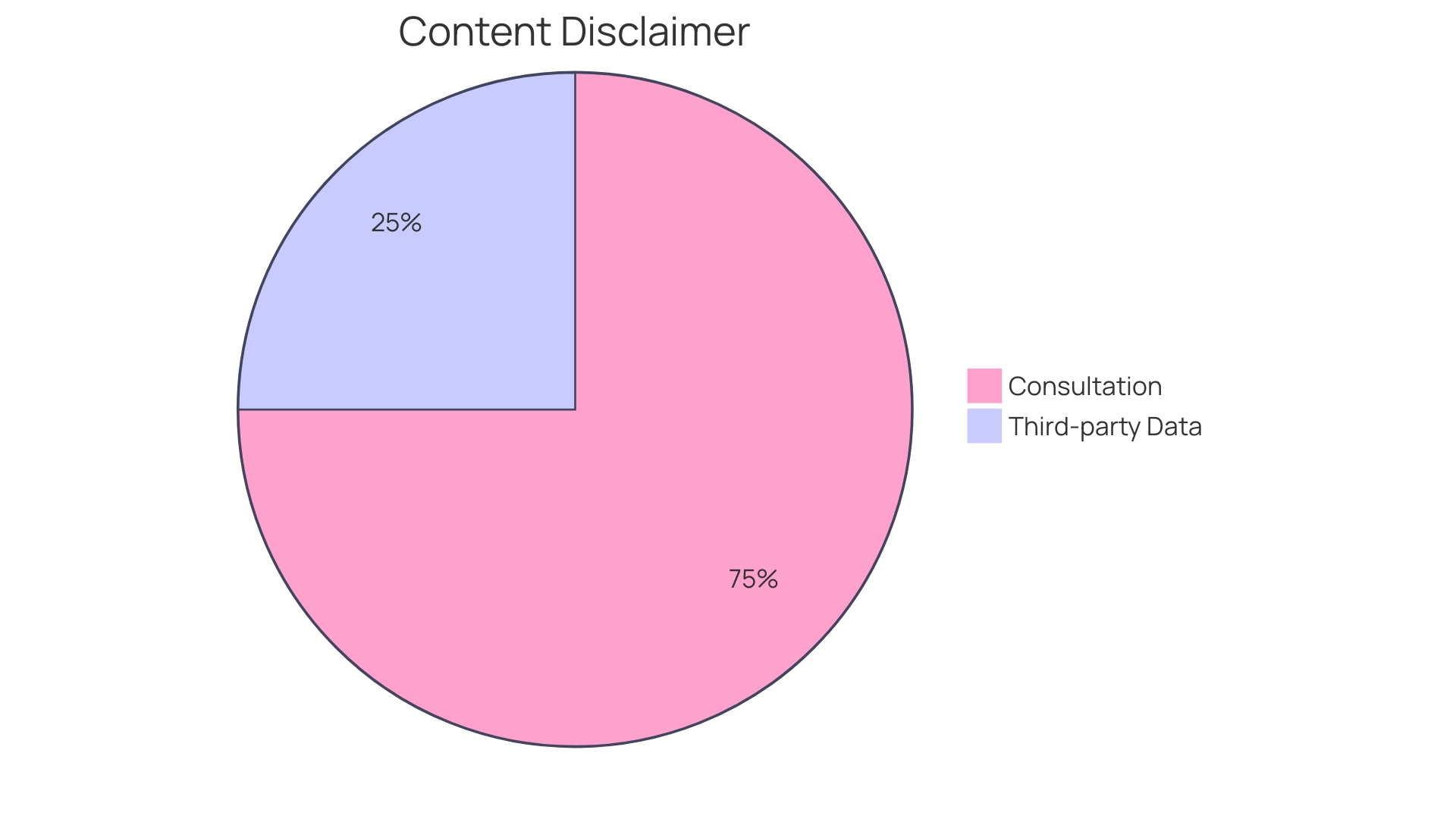
Impact of Global Events on Gas Prices
Various worldwide occurrences, including political disputes and environmental disasters, as well as changes in oil manufacturing and export rules, can greatly influence the cost of gas in Florida. By delving into the intricacies of these international occurrences, one can gain valuable insights to better forecast and navigate the possible ebbs and flows in gas pricing. For example, the transformation of the power landscape over the past two decades, exemplified by RBAC, Inc.'s GPCM® Market Simulator for North American Gas and LNG™ and its global counterpart G2M2®, underscores the heightened interconnectedness of regional and global gas markets.
These tools reflect a critical shift from the days when a significant portion of the U.S. gas supply, approximately 20%, was sourced from the federal offshore Gulf of Mexico, and hurricanes in the area led to immediate price spikes. Today, with the offshore region contributing merely around 2% to the nation's gas, the impact of such events has been attenuated. The development of eight LNG export facilities, with many more on the horizon, indicates the swift transformation of the sector.
Furthermore, recent geopolitical events, such as the conflict in Ukraine, have redefined the dialogue on power, highlighting concerns of security, cost-effectiveness, and competitiveness in the industrial sector. These advancements provoke a reassessment of the transition's path, emphasizing the intricacies of attaining sub-1.5°C warming objectives while recognizing significant progress toward a net-zero future, demonstrated by surging electric vehicle (EV) sales and adoption of renewable sources of power.
In an era where precision forecasting becomes a strategic advantage, sensitivity analysis emerges as a pivotal tool for industry stakeholders. Anticipation of seasonal changes, especially in the winter months when consumption and costs are susceptible to fluctuations, is vital. This approach provides a strategic framework for industry players to prepare and develop strategies in response to market fluctuations, highlighting the significance of comprehending market trends rather than trying to forecast exact cost levels.
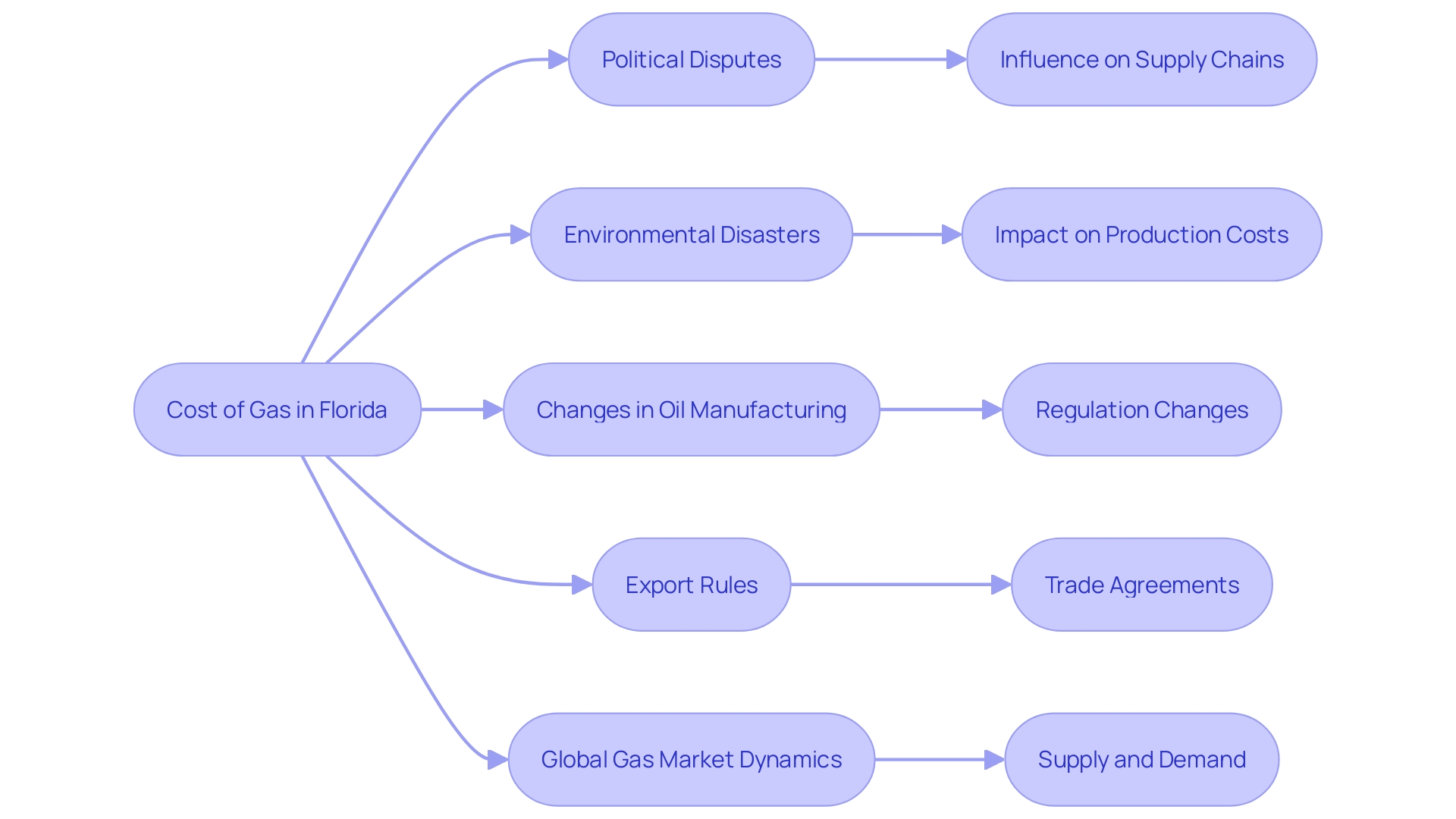
Future Outlook for Gas Prices in Florida
As we navigate through the ever-changing landscape of the power sector, it's essential to keep a keen eye on the myriad of elements influencing gas prices in Florida. The renewable fuels industry is experiencing a significant shift, characterized by the integration of green hydrogen as a crucial power source. This shift is fueled by the rising concern over climate change and the quest for a net-zero future, catalyzing a transition from theoretical frameworks to tangible, large-scale implementations, as evidenced by FP&L's Cavendish NextGen Hydrogen Hub.
The renewable natural gas (RNG) market is another domain gaining momentum, particularly due to its climate change mitigation potential. RNG, frequently generated from sources such as animal manure, wastewater, and landfills, is gaining attention as it acquires government incentives and becomes a component of a more environmentally friendly solution to our power requirements.
Amidst this backdrop, the global power landscape is being redefined by the burgeoning demand for natural gas. Projections indicate a substantial rise in demand, driven by global events and a collective shift from coal to cleaner alternatives. The U.S. is responding with enhancements to LNG export facilities and infrastructure, aligning with the anticipated 10% demand surge through 2025.
On the policy front, the Inflation Reduction Act and upcoming presidential election debates are set to intensify discussions around sustainable power initiatives. Public opinion is changing, with rural communities demonstrating a growing preference for wind and solar power, propelled by the combination of economic considerations and environmental responsibility.
The atomic sector is not to be overlooked, as nuclear power is poised to discard its tarnished image. Investments in small modular reactors and the rejuvenation of existing infrastructure signal a renaissance in nuclear power, bolstered by bipartisan Congressional support.
In this situation, the gas prices of the state of Florida are not only influenced by local elements but are closely connected to the broader energy landscape. The state's future gas trajectory will be influenced by these pivotal developments in clean and renewable energy, along with the complex interplay of global demand, policy reforms, and technological advancements.
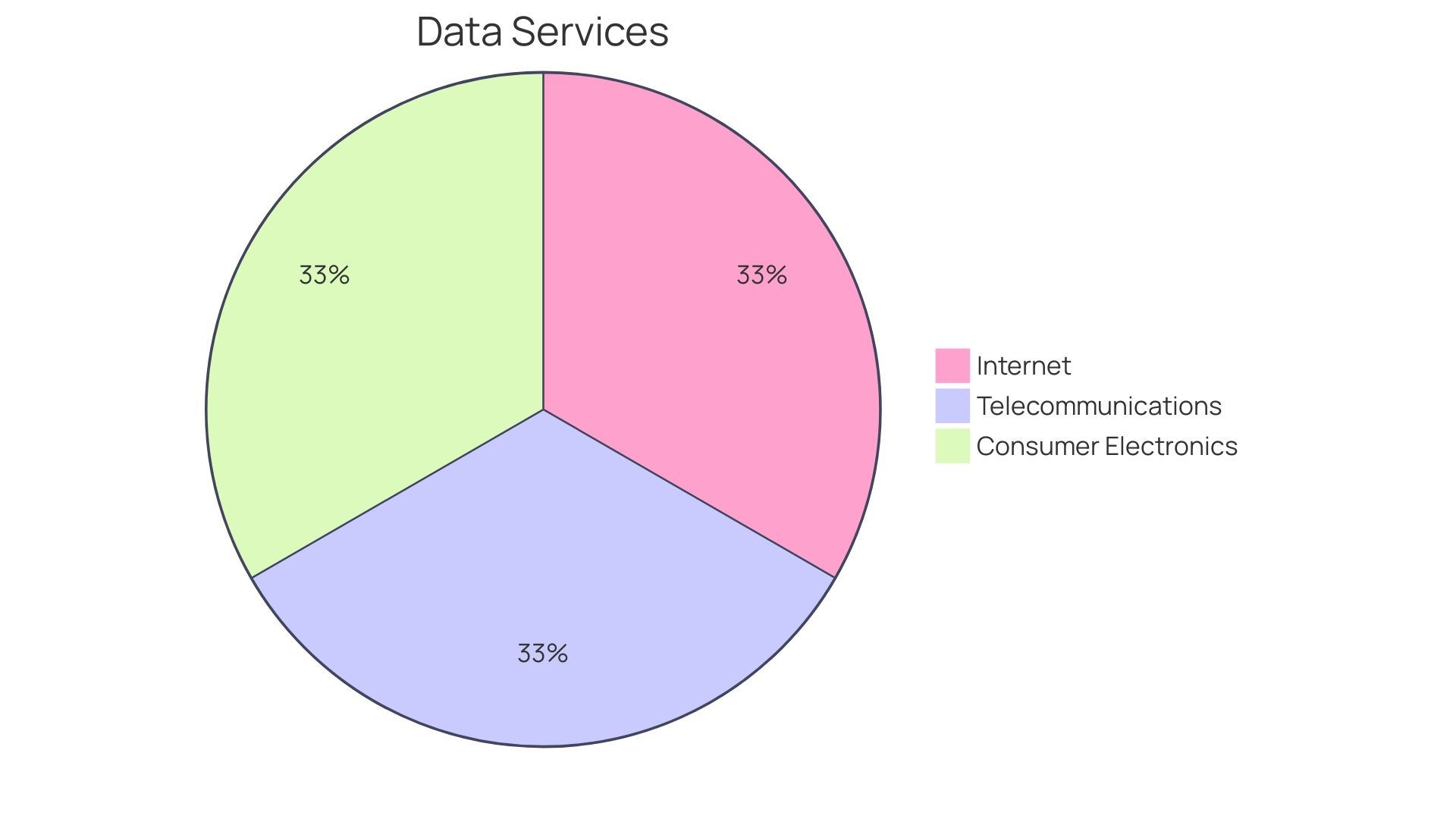
Historical Context of Gas Price Fluctuations in Florida
The gas prices in this state are a testament to the dynamic interplay of regional growth, infrastructure constraints, and market forces. The state's population surged by 18% from 2010 to 2022, reaching an estimated 22.2 million residents, outpacing the slow growth of other East Coast states. This demographic expansion has increased the demand for fuel, making the logistics of supply more complex due to the geographical peculiarities of the area. Unlike other East Coast states served by major pipelines like Colonial and Products (SE), the state heavily relies on shipments by water from U.S. Gulf Coast refiners. For parts of the state not serviced by these pipelines, fuel is trucked in from the end of Colonial Pipeline spurs in southern Georgia. Additionally, a significant portion of the state's fuel is sourced from European imports.
The logistics of fuel supply to the state underscore the importance of understanding the regulatory framework governing power infrastructure. The Natural Gas Policy Act (NGPA) and the Outer Continental Shelf Lands Act (OCSLA) play critical roles in regulating the transportation of natural gas and the construction of facilities. The Office of Energy Projects establishes guidelines for inspections, highlighting the importance of these regulations in maintaining the efficient and secure flow of power.
While natural gas stands as a cleaner alternative to other fossil fuels, its role in Florida’s landscape is shaped by its uses in electricity production, commercial and residential heating, and various industrial applications. The transition from coal to natural gas for electricity generation has been pivotal in improving air quality and reducing carbon emissions. The state's electricity profile reveals an increased efficiency in power production with the implementation of new methodologies in fuel consumption allocation for combined heat and power (CHP) plants since 2004. This efficiency gain appears as a decrease in fuel consumption for electricity generation, demonstrating natural gas's potential to support a cleaner future.
In the broader context, natural gas is not just a by-product of oil but a cornerstone in the transition, offering a blend of affordability, cleaner burning, and versatility. This transition fuel has become increasingly vital in the global mix, with demand drivers including its role in displacing coal for electricity production, heating solutions, and its varied industrial uses. As Florida's energy demands evolve, the state will continue to navigate the intricacies of gas price fluctuations influenced by its unique supply challenges and the evolving regulatory and market landscape.
Conclusion
In conclusion, Florida's gas prices are influenced by a complex interplay of factors, including global oil market fluctuations, supply and demand dynamics, transportation logistics, taxes, and regulatory frameworks. Strategic interventions like streamlining the interconnection process and enhancing transmission planning have the potential to reverse recent cost increases in clean energy. Understanding regional differences in gas prices, comparing them to the national average, and considering the impact of global events provides valuable insights for consumers and policymakers.
Looking ahead, the future outlook for gas prices in Florida is shaped by the transformative growth of the renewable fuels industry, increasing global demand for natural gas, policy reforms, and technological advancements. Clean and renewable energy developments, alongside the evolving market landscape, will determine the trajectory of gas prices in the state.
In the historical context of gas price fluctuations in Florida, population growth, infrastructure constraints, and market forces have played significant roles. Natural gas, as a cornerstone in the energy transition, offers affordability, cleaner burning, and versatility. Understanding these factors is crucial for making informed decisions regarding energy consumption and sustainability in Florida.
By considering these interconnected factors, stakeholders can navigate the dynamic landscape of energy markets and contribute to a more sustainable and efficient energy future in Florida.




